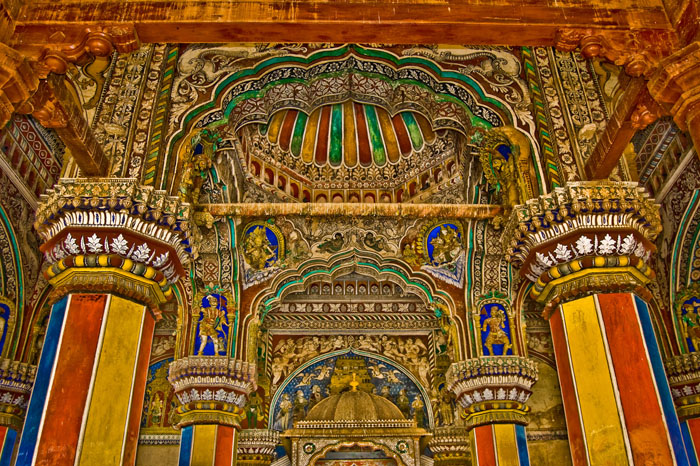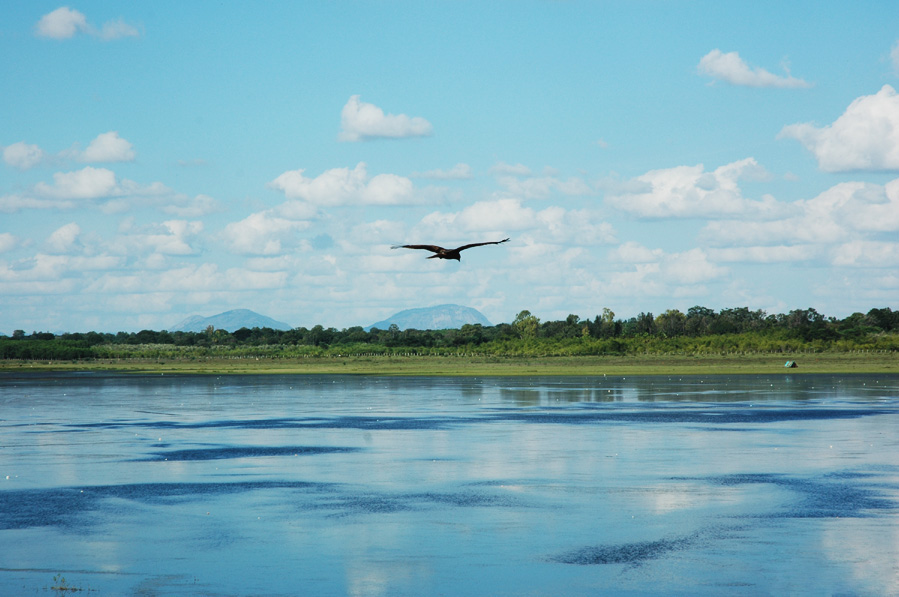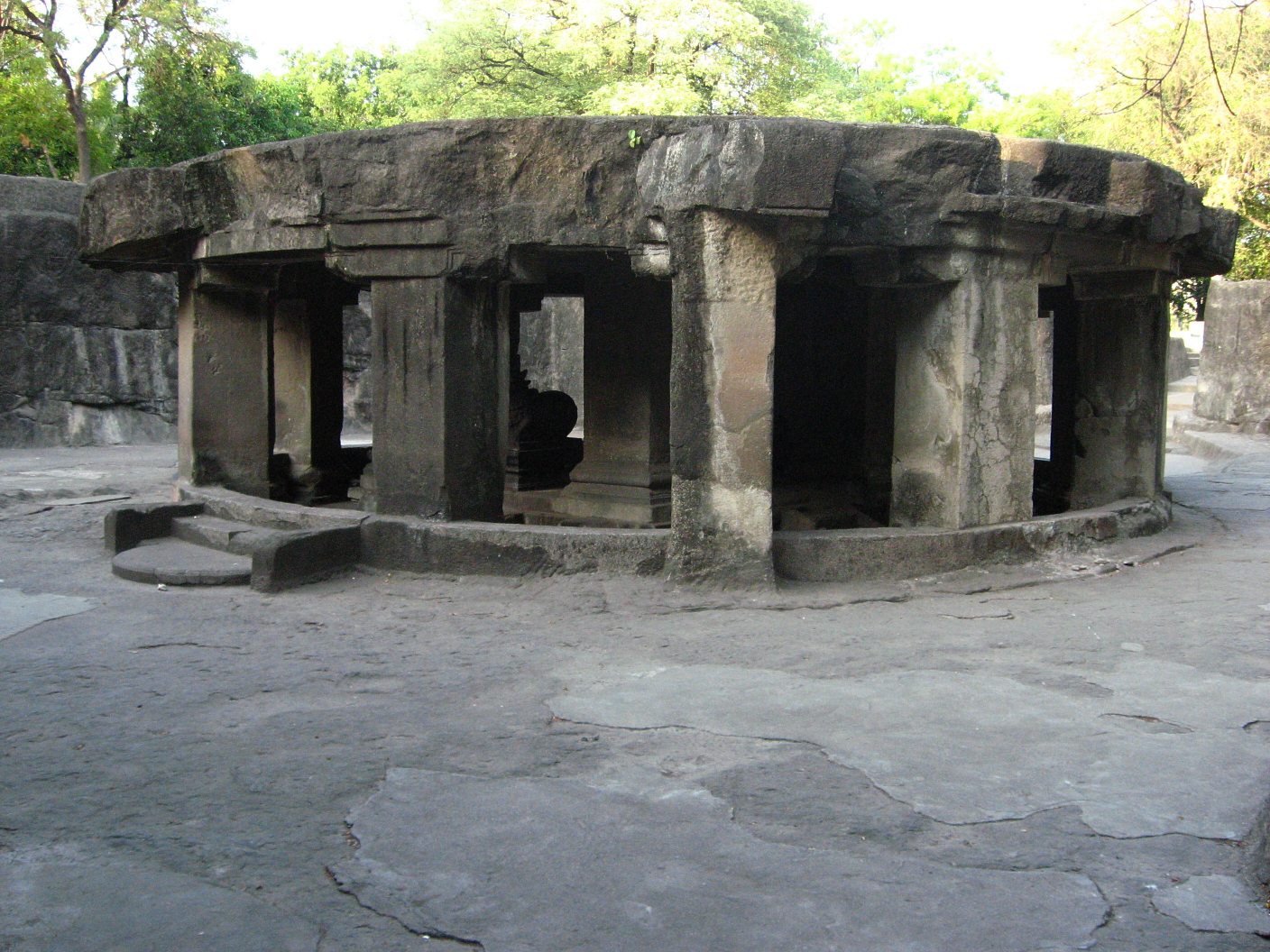|
Shahaji
Shahaji Bhonsale (Pronunciation: â╔Ö╔Žad═í╩ĺi╦É c. 1594 ÔÇô 1664) was a military leader of India in the 17th century, who served the Ahmadnagar Sultanate, the Bijapur Sultanate, and the Mughal Empire at various points in his career. As a member of the Bhonsle clan, Shahaji inherited the Pune and Supe jagirs (fiefs) from his father Maloji, who served Ahmadnagar. During the Mughal invasion of Deccan, he joined the Mughal forces and served under Emperor Shah Jahan for a short period. After being deprived of his jagirs, he defected to the Bijapur Sultanate in 1632 and regained control over Pune and Supe. In 1638, he received the jagir of Bangalore after Bijapur's invasion of Kempe Gowda III's territories. He became the chief general of Bijapur and oversaw its expansion. He brought the house of Bhosale into prominence. He was the father of Shivaji, the founder of the Maratha Empire. The princely states of Tanjore, Kolhapur, and Satara were ruled by Shahaji's descendants. Earl ... [...More Info...] [...Related Items...] OR: [Wikipedia] [Google] [Baidu] |
Shivaji
Shivaji Bhonsale I (; 19 February 1630 ÔÇô 3 April 1680), also referred to as Chhatrapati Shivaji Maharaj, was an Indian ruler and a member of the Bhonsle Maratha clan. Shivaji carved out his own independent kingdom from the declining Adilshahi sultanate of Bijapur which formed the genesis of the Maratha Empire. In 1674, he was formally crowned the '' Chhatrapati'' of his realm at Raigad Fort. Over the course of his life, Shivaji engaged in both alliances and hostilities with the Mughal Empire, the Sultanate of Golkonda, Sultanate of Bijapur and the European colonial powers. Shivaji's military forces expanded the Maratha sphere of influence, capturing and building forts, and forming a Maratha navy. Shivaji established a competent and progressive civil rule with well-structured administrative organisations. He revived ancient Hindu political traditions, court conventions and promoted the usage of the Marathi and Sanskrit languages, replacing Persian in court and admi ... [...More Info...] [...Related Items...] OR: [Wikipedia] [Google] [Baidu] |
Kolhapur State
Kolhapur State or Kolhapur Kingdom (1710ÔÇô1949) was a Maratha princely State of India, under the Deccan Division of the Bombay Presidency, and later the Deccan States Agency. It was considered the most important of the Maratha principalities with the others being Baroda State, Gwalior State and Indore State. Its rulers, of the Bhonsle dynasty, were entitled to a 19-gun salute ÔÇô thus Kolhapur was also known as a 19-gun state. The state flag was a swallow-tailed saffron pennant. Kolhapur State, together with its ''jagirs'' or feudatory vassal estates (including Ichalkaranji), covered an area of 3,165 square miles (8,200 km2). According to the 1901 census, the state population was 910,011, of which 54,373 resided in Kolhapur Town. In 1901, the state enjoyed an estimated revenue of ┬ú300,000. History The Maharajas of Kolhapur have a common ancestry with the Bhonsle dynasty of Satara, being direct descendants of the Maratha King Shivaji. The states of Satara and Kol ... [...More Info...] [...Related Items...] OR: [Wikipedia] [Google] [Baidu] |
Maloji Bhosale
Maloji Bhosale was a Maratha sardar (general) who served the Ahmadnagar Sultanate in Malik Ambar's army. He was the father of Shahaji and the grandfather of Shivaji, the founder of the Maratha Empire. Early life Maloji was born in 1552 to Babaji Bhosale (d. 1597), a patil (chief) of the Hingni Berdi and Devalgaon villages around Pune. Maloji had a younger brother, Vithoji. Military career under the Jadhavs of Sindkhed Maloji and his brother Vithoji migrated away from Pune, and initially served as petty horsemen under the Jadhavs of Sindkhed. The Jadhavs provided military service to the Ahmednagar Sultanate. Maloji married Uma Bai (also known as Dipa Bai), the sister of Jagpalrao Nimbalkar, who was the deshmukh of Phaltan According to ''Shivabharata'', composed by Shivaji's court poet Paramananda, Maloji's wife Umabai prayed to the Sufi Pir Shah Sharif of Ahmadnagar to bless her with a son. She gave birth to two sons, who were named Shahaji and Sharifji after the P ... [...More Info...] [...Related Items...] OR: [Wikipedia] [Google] [Baidu] |
Maloji
Maloji Bhosale was a Maratha sardar (general) who served the Ahmadnagar Sultanate in Malik Ambar's army. He was the father of Shahaji and the grandfather of Shivaji, the founder of the Maratha Empire. Early life Maloji was born in 1552 to Babaji Bhosale (d. 1597), a patil (chief) of the Hingni Berdi and Devalgaon villages around Pune. Maloji had a younger brother, Vithoji. Military career under the Jadhavs of Sindkhed Maloji and his brother Vithoji migrated away from Pune, and initially served as petty horsemen under the Jadhavs of Sindkhed. The Jadhavs provided military service to the Ahmednagar Sultanate. Maloji married Uma Bai (also known as Dipa Bai), the sister of Jagpalrao Nimbalkar, who was the deshmukh of Phaltan According to ''Shivabharata'', composed by Shivaji's court poet Paramananda, Maloji's wife Umabai prayed to the Sufi Pir Shah Sharif of Ahmadnagar to bless her with a son. She gave birth to two sons, who were named Shahaji and Sharifji after the Pir. ... [...More Info...] [...Related Items...] OR: [Wikipedia] [Google] [Baidu] |
Sambhaji Shahaji Bhosale
Sambhaji Shahaji Bhosle (1623ÔÇô1655) was the elder son of Shahaji and Jijabai. He was the elder brother of Shivaji. At the time of Sambhaji's birth, Shahaji was a general in the court of Nizamshahi. Sambhaji was killed in an assault on Kanakagiri Kanakagiri (also known as Suvarnagiri) is a town in Karnataka state of India. It was a provincial capital of the Mauryan Empire and later became the capital of the Nayaka dynasty who were the Palegars (feudatory) of the Vijayanagara Empire. I ... by Afzal Khan. References {{DEFAULTSORT:Bhosale, Sambhaji Shahaji 1623 births 1648 deaths Shivaji Indian royalty ... [...More Info...] [...Related Items...] OR: [Wikipedia] [Google] [Baidu] |
Jijabai
Jijabai Bhonsle (or┬áBhonsale,┬áBhosale,┬áBhosle) or Jadhav (12 January 1598 ÔÇô 17 June 1674), referred to as Rajmata, Rastramata, Jijabai or Jijau, was the mother of Shivaji, founder of the Maratha Empire. She was a daughter of Lakhujirao Jadhav of Sindkhed Raja. History Jijabai was born on 12 January 1598, to Mahalasabai Jadhav and Lakhuji Jadhav of Deulgaon, near Sindkhed, in present-day Buldhana district of Maharastra. Lakhojiraje Jadhav was a Maratha noble. Jijabai was married at an early age to Shahaji Bhosle, son of Maloji Bhosle of Verul village, a military commander serving under the Nizam Shahi sultans. She taught Shivaji about swarajya and raised him to be a warrior. Jijabai died on 17 June 1674. Jijabai (the mother of Shivaji, who founded the Maratha Empire) belonged to the clan of jadhavas of Sindkhed Raja, who also claimed descent from the Yadavas. Life and work When Shivaji was 14 years old, Shahaji Raje handed over the Jagir of Pune to him. Of course ... [...More Info...] [...Related Items...] OR: [Wikipedia] [Google] [Baidu] |
Ekoji
Vyankojirajah Bhonsle (born 1632) or Ekojirajah I Bhonsle was the younger half-brother of Shivaji and founder of Maratha rule in Thanjavur in modern day Tamil Nadu. He was the progenitor of the junior branch of the Bhonsle family which ruled Thanjavur until the formal annexation of the kingdom by the British in 1855. Early career Venkoji was the younger son of Shahaji, a military commander in service of the Sultan of Bijapur through his younger wife Tukabai Mohite. He succeeded to the Karnataka portion of Shahaji's empire. Conquest of Thanjavur In 1673, the Nayak of Madurai invaded the kingdom of Thanjavur under the rule of the Thanjavur Nayaks and drove away the ruler. He then proceeded to place his younger brother Alagiri Nayak on the throne of Thanjavur. This was resented by Rayasam Venkanna, a high-ranking official in the court of Thanjavur who supported the cause of Chengamala Dasu, the deposed son of Vijayaraghava, the late Nayak of Thanjavur. He proceeded to the ... [...More Info...] [...Related Items...] OR: [Wikipedia] [Google] [Baidu] |
Maratha Empire
The Maratha Empire, also referred to as the Maratha Confederacy, was an early modern Indian confederation that came to dominate much of the Indian subcontinent in the 18th century. Maratha rule formally began in 1674 with the coronation of Shivaji of the Bhonsle Dynasty as the '' Chhatrapati'' (Marathi: "The title "Chhatrapati" was created by Shivaji upon his coronation"). Although Shivaji came from the Maratha caste, the Maratha empire also included warriors, administrators and other notables from Maratha and several other castes from Maharashtra. They are largely credited for ending the Mughal control over the Indian subcontinent and establishing the Maratha Empire. The religious attitude of Mughal Emperor Aurangzeb estranged non-Muslims, and his inability to finish the resulting Maratha uprising after a 27-year war at a great cost to his men and treasure, eventually ensued Maratha ascendency and control over sizeable portions of former Mughal lands in the north or ab ... [...More Info...] [...Related Items...] OR: [Wikipedia] [Google] [Baidu] |
Bangalore
Bangalore (), officially Bengaluru (), is the capital and largest city of the Indian state of Karnataka. It has a population of more than and a metropolitan population of around , making it the third most populous city and fifth most populous urban agglomeration in India, as well as the largest city in South India, and the 27th largest city in the world. Located on the Deccan Plateau, at a height of over above sea level, Bangalore has a pleasant climate throughout the year, with its parks and green spaces earning it the reputation as the "Garden City" of India. Its elevation is the highest among the major cities of India. An aerospace, heavy engineering and electronics hub since the 1960s, Bangalore is widely regarded as the "Silicon Valley of India" because of its role as the nation's leading information technology (IT) exporter.ÔÇöÔÇöÔÇö In the Ease of Living Index 2020 (published by the Ministry of Housing and Urban Affairs), it was ranked the most livable ... [...More Info...] [...Related Items...] OR: [Wikipedia] [Google] [Baidu] |
Satara District
Satara district (Marathi pronunciation: a╦Ét╠¬a╔ża╦É is a district of Maharashtra state in western India with an area of and a population of 3,003,741 of which 14.17% were urban (). Satara is the capital of the district and other major towns include Medha, Wai, Karad, Koregaon, Maan, Koynanagar, Rahimatpur, Phaltan, Mahabaleshwar, Vaduj and Panchgani. This district comes under Pune Administrative Division along with Pune, Sangli, Solapur and Kolhapur. The district of Pune bounds it to the north, Raigad bounds it to the north-west, Solapur the east, Sangli to the south, and Ratnagiri to the west. The Sahyadri range, or main range of the Western Ghats, runs north and south along the western edge of the district, separating it from Ratnagiri District. The Mahadeo range starts about 10 m. north of Mahabaleshwar and stretches east and south-east across the whole of the district. The Mahadeo hills are bold, presenting bare scarps of black rock like fortresses. The Satara distric ... [...More Info...] [...Related Items...] OR: [Wikipedia] [Google] [Baidu] |
Pune
Pune (; ; also known as Poona, ( the official name from 1818 until 1978) is one of the most important industrial and educational hubs of India, with an estimated population of 7.4 million As of 2021, Pune Metropolitan Region is the largest in Maharashtra by area, with a geographical area of 7,256 sq km. It has been ranked "the most liveable city in India" several times. Pune is also considered to be the cultural and educational capital of Maharashtra. Along with the municipal corporation area of PCMC, PMC and the three cantonment towns of Camp, Khadki, and Dehu Road, Pune forms the urban core of the eponymous Pune Metropolitan Region (PMR). Situated {{convert, 560, m, 0, abbr=off above sea level on the Deccan plateau, on the right bank of the Mutha river,{{cite web , last=Nalawade , first=S.B. , url=http://www.ranwa.org/punealive/pageog.htm , title=Geography of Pune Urban Area , publisher=Ranwa , access-date=4 April 2008 , archive-url=https://web.archive.org/web/20071 ... [...More Info...] [...Related Items...] OR: [Wikipedia] [Google] [Baidu] |
Ahmadnagar Sultanate
The Ahmadnagar Sultanate was a late medieval Indian Muslim kingdom located in the northwestern Deccan, between the sultanates of Gujarat and Bijapur. Malik Ahmed, the Bahmani governor of Junnar after defeating the Bahmani army led by general Jahangir Khan on 28 May 1490 declared independence and established the Nizam Shahi dynasty rule over the sultanate of Ahmednagar. Initially his capital was in the town of Junnar with its fort, later renamed Shivneri. In 1494, the foundation was laid for the new capital Ahmadnagar. In 1636 Aurangzeb, then Mugal viceroy of Deccan, finally annexed the sultanate to the Mughal Empire. Ahmednagar sultanate was dependent on Koli chieftains for military or soldiers. Koli chieftains of provided the cavalry and infantry for Sultans of Ahmednagar during wartimes. History Establishment Malik Ahmad Nizam Shah I was the son of Nizam-ul-Mulk Malik Hasan Bahri, originally a Hindu Brahmin from Beejanuggar (or Bijanagar) originally named Timapa. Ahme ... [...More Info...] [...Related Items...] OR: [Wikipedia] [Google] [Baidu] |







.jpg)